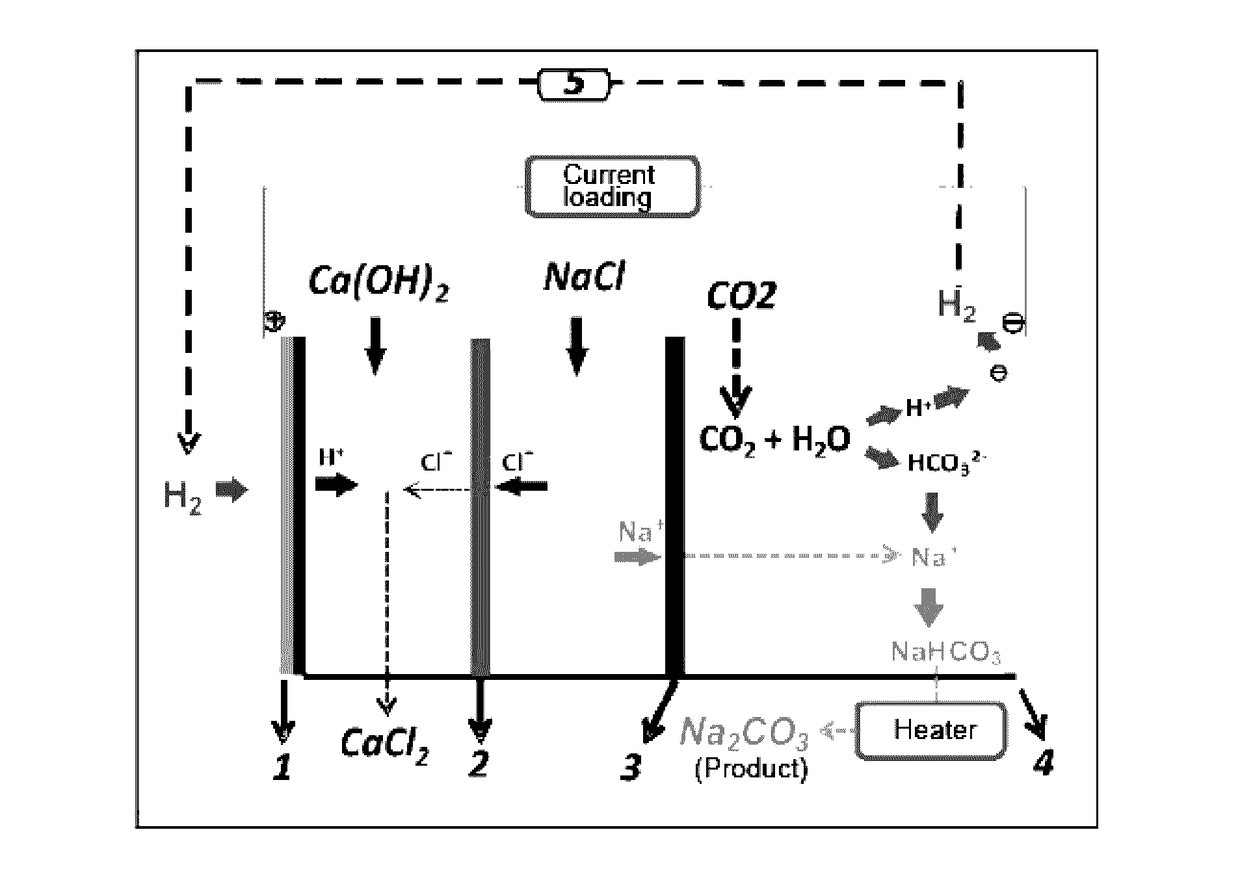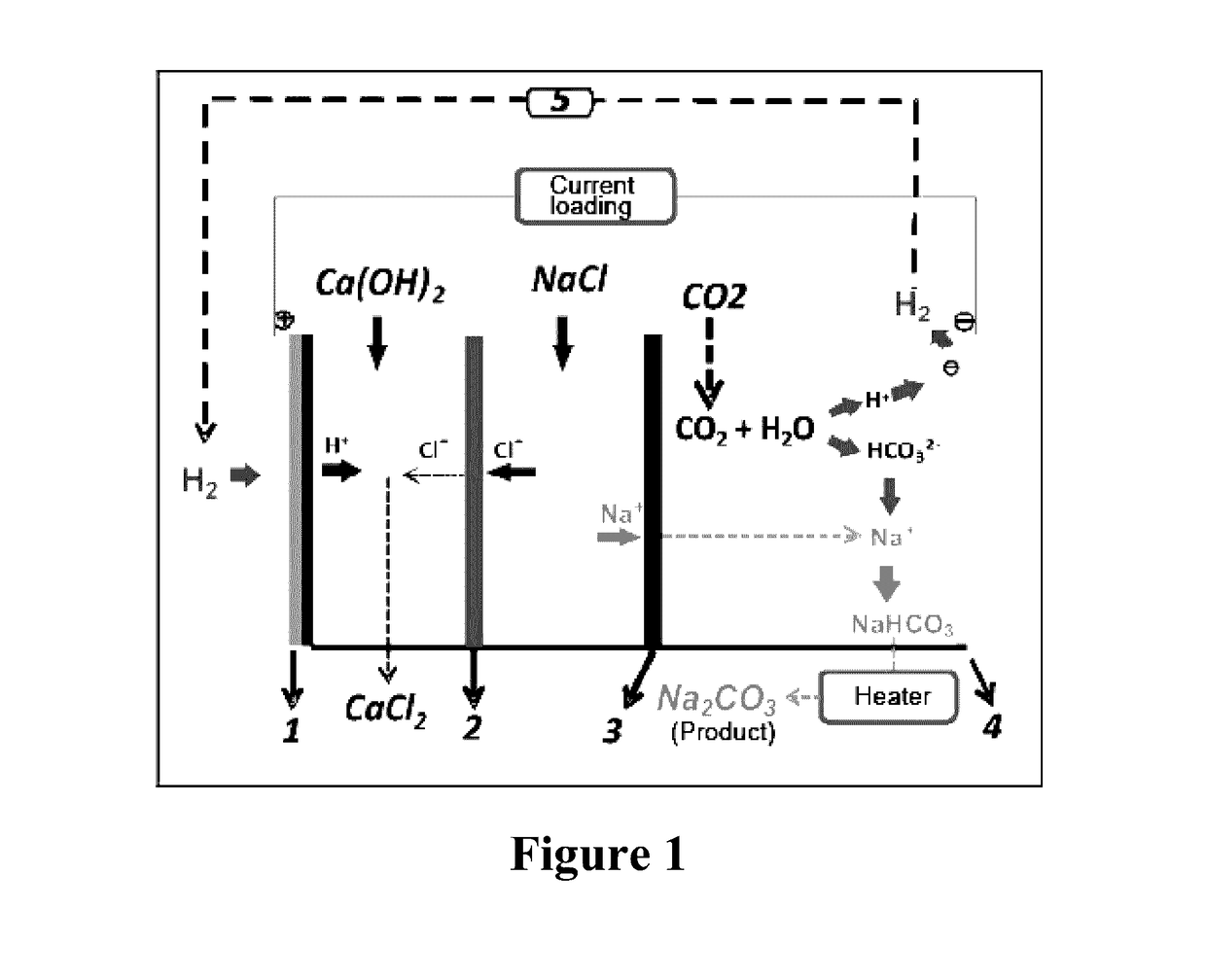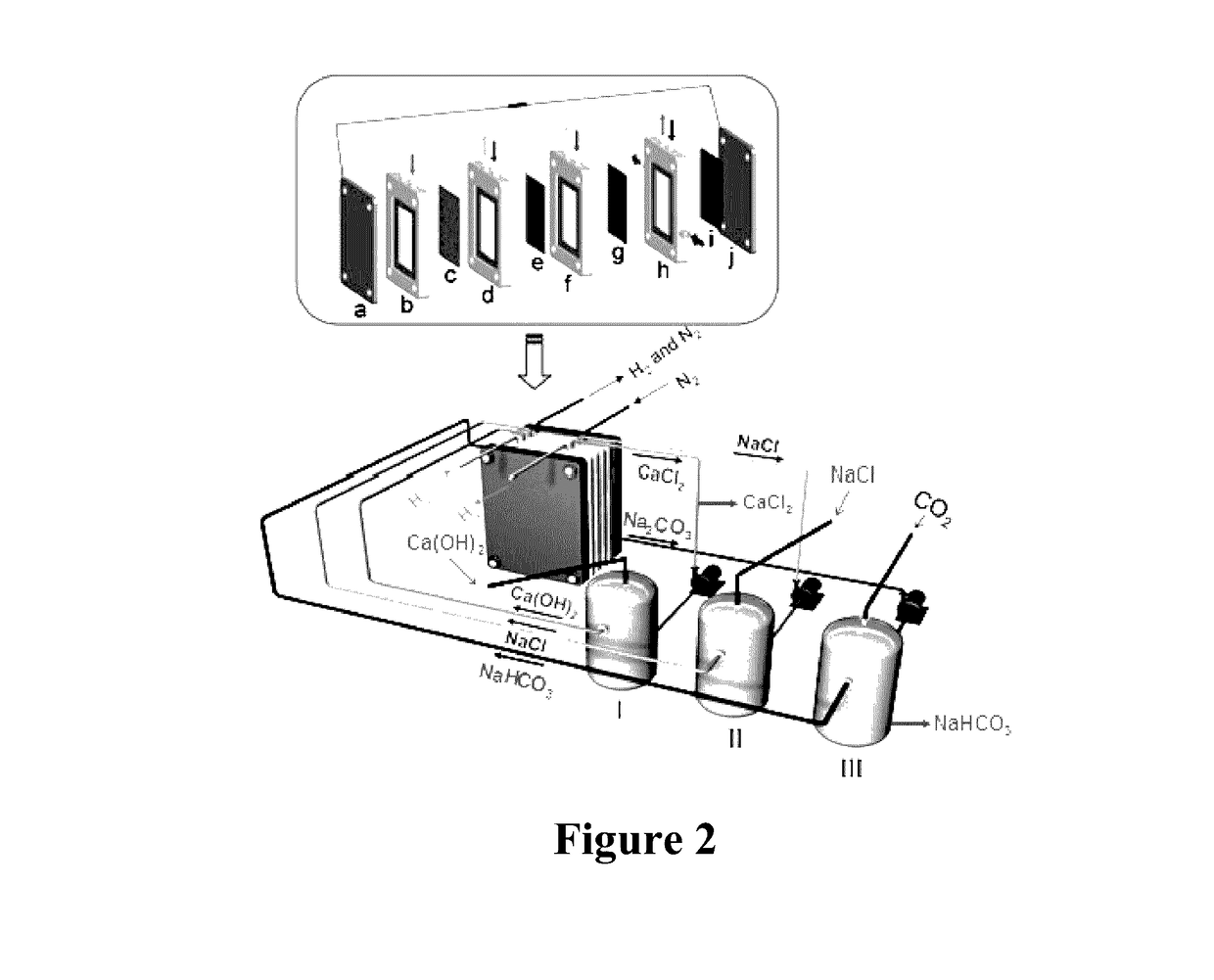Method and device for using co2 mineralization to produce sodium bicarbonate or sodium carbonate and output electric energy
a technology of sodium bicarbonate and electrochemical energy, which is applied in the direction of electrochemical generators, cell components, electrochemical processes, etc., can solve the problems of sodium bicarbonate (nahcosub>3/sub>), sodium bicarbonate, and an important raw material, and achieve high purity and high purity. , the effect of high purity
- Summary
- Abstract
- Description
- Claims
- Application Information
AI Technical Summary
Benefits of technology
Problems solved by technology
Method used
Image
Examples
example 1
[0053]The process of using CO2 mineralization to produce sodium carbonate and output electric energy in this example is shown in FIG. 1. As the housing of a CO2 generating device, a container was divided into an anode region, an intermediate region and a cathode region by a cation exchange membrane 3 which only allowed cation to permeate and prevented anion from permeating in the container and an anion exchange membrane 2 which only allowed anion to permeate and prevented cation from penetrating. A solid calcium hydroxide was added to 1 mol / L NaCl solution to form a cloudy solution containing saturated Ca(OH)2, and the solution was added to the anode region as an anolyte. To the cathode, 0.3 mol / L NaHCO3 solution was added as a catholyte, and 6 mol / L NaCl solution was added to the intermediate region as an intermediate electrolyte. A gas diffusion electrode 1 was used as the anode electrode, and an electrode 4 using nickel foam supported Pt / C catalyst was used as the cathode electro...
example 2
[0054]The mineralization process of the example is shown in FIG. 1. As the housing of a CO2 generating device, a container was divided into an anode region, an intermediate region and a cathode region by a cation exchange membrane 3 which only allowed cation to permeate and prevented anion from permeating in the container and an anion exchange membrane 2 which only allowed anion to permeate and prevented cation from penetrating. To the anode region, 1 mol / L aqueous ammonia was added as an anolyte, 1 mol / L NaHCO3 solution was added to the cathode region as a catholyte, and saturated NaCl solution was added to the intermediate region as an intermediate electrolyte. A gas diffusion electrode 1 was used as the anode electrode, and an electrode 4 using nickel foam supported Pt / C catalyst was used as the cathode electrode. CO2 gas was bubbled into the cathode region from the bottom of the container as the housing of the CO2 generating device, and the hydrogen generated from the cathode el...
example 3
[0055]The mineralization process of the example is shown in FIG. 1. As the housing of a CO2 generating device, a container was divided into an anode region, an intermediate region and a cathode region by a cation exchange membrane 3 which only allowed cation to permeate and prevented anion from permeating in the container and an anion exchange membrane 2 which only allowed anion to permeate and prevented cation from penetrating. To 1 mol / L NaCl solution, 1 mol / L Na(OH)2 was added to form a mixed solution. The mixed solution was added to the anode region as an anolyte, saturated NaHCO3 solution was added to the cathode region as a catholyte, and saturated NaCl solution was added to the intermediate region as an intermediate electrolyte. A gas diffusion electrode 1 was used as the anode electrode, and an electrode 4 using nickel foam supported Pt / C catalyst was used as the cathode electrode. CO2 gas was bubbled into the cathode region from the bottom of the container as the housing of...
PUM
| Property | Measurement | Unit |
|---|---|---|
| acidity | aaaaa | aaaaa |
| pH | aaaaa | aaaaa |
| chemical energy | aaaaa | aaaaa |
Abstract
Description
Claims
Application Information
 Login to View More
Login to View More - R&D
- Intellectual Property
- Life Sciences
- Materials
- Tech Scout
- Unparalleled Data Quality
- Higher Quality Content
- 60% Fewer Hallucinations
Browse by: Latest US Patents, China's latest patents, Technical Efficacy Thesaurus, Application Domain, Technology Topic, Popular Technical Reports.
© 2025 PatSnap. All rights reserved.Legal|Privacy policy|Modern Slavery Act Transparency Statement|Sitemap|About US| Contact US: help@patsnap.com



